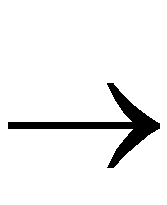FPGA Editor GuideChapter 3: Using the FPGA Editor
Placing and Unplacing Components
Note: For information on placing or unplacing macros, see the “Working with Physical Macros” chapter.
Components can be placed in the Array window either automatically or manually. When you use automatic placement (AutoPlace), the system selects an appropriate site or sites for each component you select for placement. When you use manual placement, you select both a source component and the destination site in which to place it.
The automatic placement software selects sites based on routability. You can automatically place selected components or automatically place all remaining unplaced components in your design.
You can also unplace components. Unplacing unroutes each net pin on the components you select, and removes the components from the Array window and adds them to the list of your design's unplaced components.
This section contains the following topics.
Automatically Placing Selected Components
You can automatically place selected components with the Autoplace command. To automatically place selected components, perform the following procedure.
- In the List window, display a list of unplaced components.
- In the list of unplaced components, select the components to automatically place.
- Select Tools
 Place
Place  AutoPlace.
AutoPlace.
The selected components are automatically placed in vacant sites in the Array window. If the Automatic Routing Option is On, the components are routed after they are placed.
Notes on Placing Selected Components
This section includes some additional information on placing components.
- Before the selected components are automatically placed, any unplaced pull-ups or tristate buffers in your design are automatically placed.
- Placing certain components may cause other related components to be placed.
- Because the Place and Route program (PAR) unroutes and places components more efficiently than the FPGA Editor, when you automatically place components in the FPGA Editor, existing routing is not unrouted and rerouted to achieve better placement.
Automatically Placing All Unplaced Components
To automatically place all unplaced components, perform the following procedure.
- Select Tools
 Place
Place  AutoPlace All.
AutoPlace All.
The “Autoplace All Components Dialog Box” figure of the “Menu Commands” chapter appears. Refer to this chapter for a description of the fields in this dialog box.
- Click OK.
All of your design's unplaced components are automatically placed in vacant sites in the Array window. If the Automatic Routing Option is On, the Autoroute All dialog box appears and you are prompted for information on the type of automatic placement. If it is not On, select autoroute -all.
Note: When you autoplace all remaining components in the FPGA Editor, existing routing is not unrouted and rerouted to accommodate the new placement. Because PAR unroutes components if necessary, placement done with PAR produces different results than placement done in the FPGA Editor. PAR places components more efficiently, and a densely packed design can more easily be placed and routed with PAR than with the FPGA Editor.
Manually Placing Selected Components
To manually place an unplaced component, follow this procedure.
- In the List window, display a list of unplaced components.
- Select one name from the list.
- Select a vacant site in the Array window.
The component and the site must be the same type of block (for example, IOB and IOB, or CLB and CLB).
- Select Tools
 Place
Place  Manual Place.
Manual Place.
The component is placed in the site. If the Automatic Routing Option is On, the component is routed after it is placed.
Unplacing Components
The Unplace command removes all or selected components from their current sites. Before unplacing a component, the system unroutes each component pin on the component.
Note: Locked components cannot be unplaced.
Selected Components
To unplace selected components use the following procedure.
- Select placed components from the List window.
- Select Tools
 Place
Place  Unplace.
Unplace.
The selected components are unplaced. These components now appear as unplaced in the List window.
All Components
To unplace all placed components in your design, follow these steps.
- Select Tools
 Place
Place  Unplace All.
Unplace All.
- Select Yes in the confirmation box that appears to unplace all components.
All unlocked placed components in your design are unplaced.